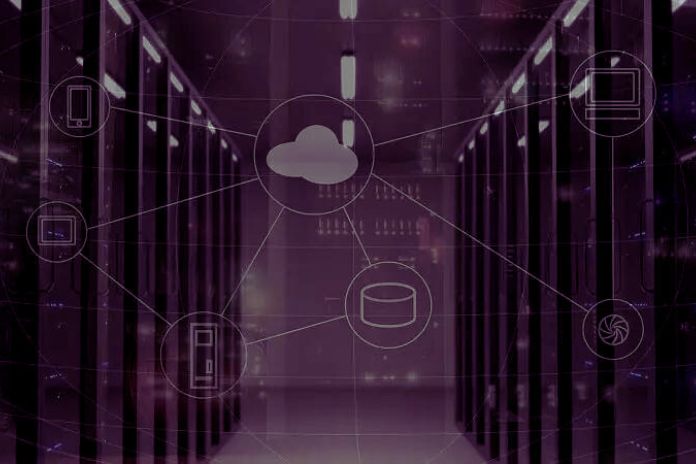Legacy systems are present in all companies, whether small, medium, or large. They are responsible for a large volume of data and processes critical to the functioning of organizations.
However, these systems have limitations, such as a lack of flexibility, scalability, and agility. Migration to the cloud is a solution that can circumvent these problems, offering several benefits to companies.
This article will discuss the main benefits of migrating legacy systems to the cloud.
What Is Migration From Legacy Systems To The Cloud?
Moving legacy systems to the cloud is a modern way to manage and improve a company’s IT infrastructure. This approach encompasses transferring legacy technologies, processes, platforms, and applications to managed services and cloud infrastructure.
These changes allow users to benefit from the latest computing and best practices in data management with cost savings, less complexity, and greater scalability. In addition, migrating to legacy systems in the cloud allows your company to provide IT teams with greater autonomy to develop new solutions, reducing the need for costly and risky experiments.
Migrating legacy systems to the cloud offers your company several benefits, from reducing energy and facilities required for local use to increasing productivity and information capabilities.
This move to the cloud also improves application development by allowing IT teams to work more efficiently and remotely. This enables IT teams to collaborate more quickly to explore and deliver better business solutions.
Additionally, migrating legacy systems to the cloud makes it easier to manage your network, making data more secure and helping businesses meet security regulations. This is possible thanks to the cloud platform, which offers greater compliance and security for all corresponding data and devices. It allows companies to monitor and manage energy usage and resource consumption on their network more easily.
Migrating legacy systems to the cloud offers many advantages and improvements to your company’s operations. Enabling remote access to data and applications, improving security compliance and network management capabilities, and reducing energy usage and total cost of ownership, moving to the cloud can bring more agility, scalability, and satisfaction to your business.
Remember that to ensure that the benefits of migrating legacy systems to the cloud are maximized; it must be carried out by qualified staff.
What Are The Benefits Of Migrating Legacy Systems?
Migration to the cloud can bring several benefits to companies, such as cost reduction, better scalability, and security.
Legacy systems – not old but still useful – must be migrated to the cloud for the company to gain the full benefits of the migration. Migrating to the cloud makes it easy for a company to upgrade legacy systems, which can increase productivity, reduce costs, and improve business processes.
Furthermore, the cloud offers enhanced security features, such as a barrier against cyber threats and DoS attacks, which makes legacy systems more secure. Migrating to the cloud is a great option for companies because it facilitates scalability, allowing you to flexibly and affordably increase access to new features.
Moving to the cloud also enables remote access to legacy systems, allowing users to access and use systems from anywhere. Therefore, it is obvious that migrating legacy systems to the cloud benefits companies in terms of cost, security, scalability, and affordability.
What’s The Best Way To Migrate?
Moving from legacy systems to the cloud can benefit your business. It is important to understand the advantages and disadvantages of this decision.
Migrating legacy systems to the cloud has many benefits, such as reduced costs, greater software scalability, access to new technologies, and improved responsiveness.
Migrating legacy systems to the cloud can also improve data security, as detecting and fixing vulnerabilities is easier. Finally, migrating legacy systems to the cloud can also result in a better user experience, as new features and usability improvements can be added.
However, a detailed and well-planned action plan is required to migrate legacy systems to the cloud to be successful.
Identifying which systems will be required for the migration and what is involved at each step is important. It is necessary to study and select the best cloud for the system, considering security requirements, costs, and other resources. Finally, an experienced and qualified team must work on the project to complete it successfully.
Therefore, migrating legacy systems to the cloud can bring many benefits if well-planned and executed. With a well-structured plan, a qualified team, and the right choice of cloud, it is possible to enjoy all the benefits of migrating legacy systems to the cloud.
So, if you are planning a migration from legacy systems to the cloud, consider all the above factors to ensure the project’s success.
How Is The Maintenance Of Systems In The Cloud?
Migrating legacy solutions to the cloud is an effective way to optimize the performance of an IT system. With the help of effective and safe technologies, this task can be done faster and more safely.
Maintaining cloud systems is made easier as service providers offer effective tools to monitor, diagnose, and fix system-related issues.
In this way, migrating to the cloud ensures high availability and access to the system 24 hours a day, 7 days a week, making it indispensable for a corporate environment.
Cloud solutions offer scalability and flexibility for business growth, which results in greater productivity and increased operational efficiency. All this contributes to migrating legacy systems to the cloud is very advantageous for an organization.

